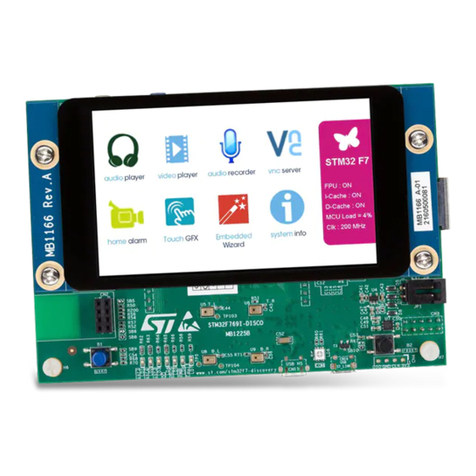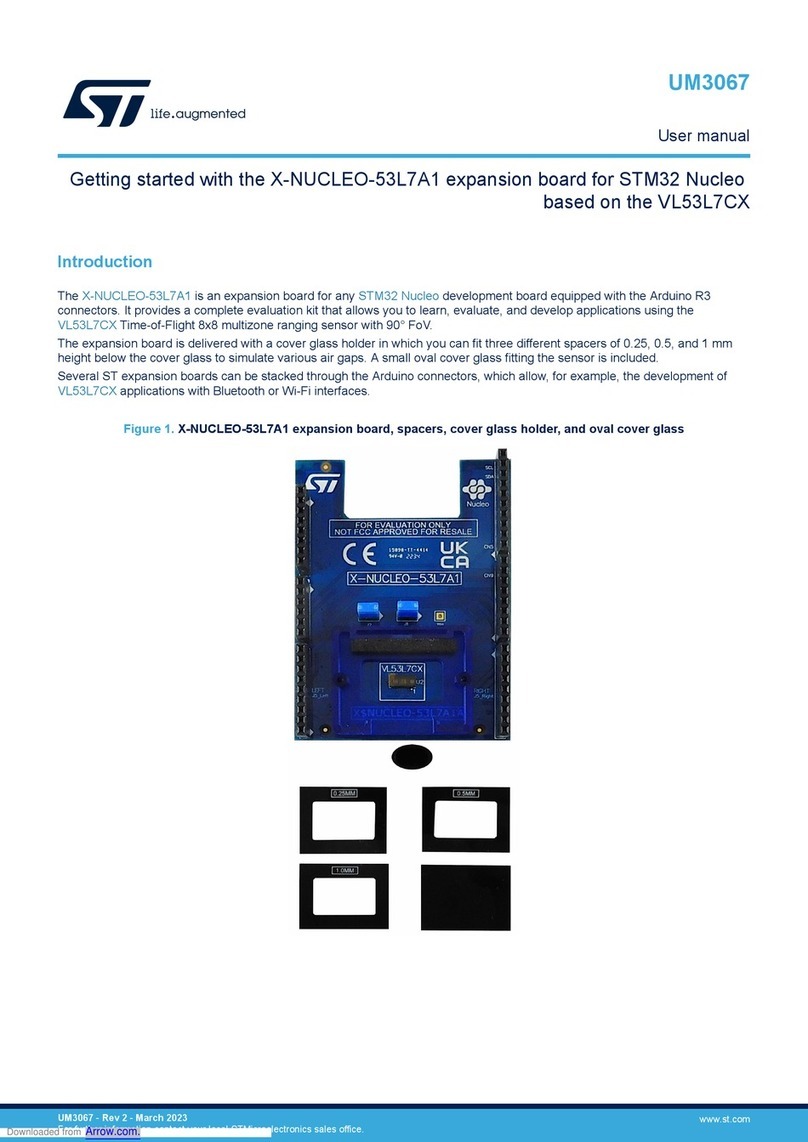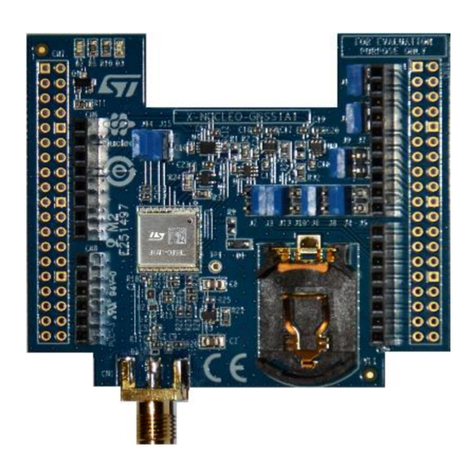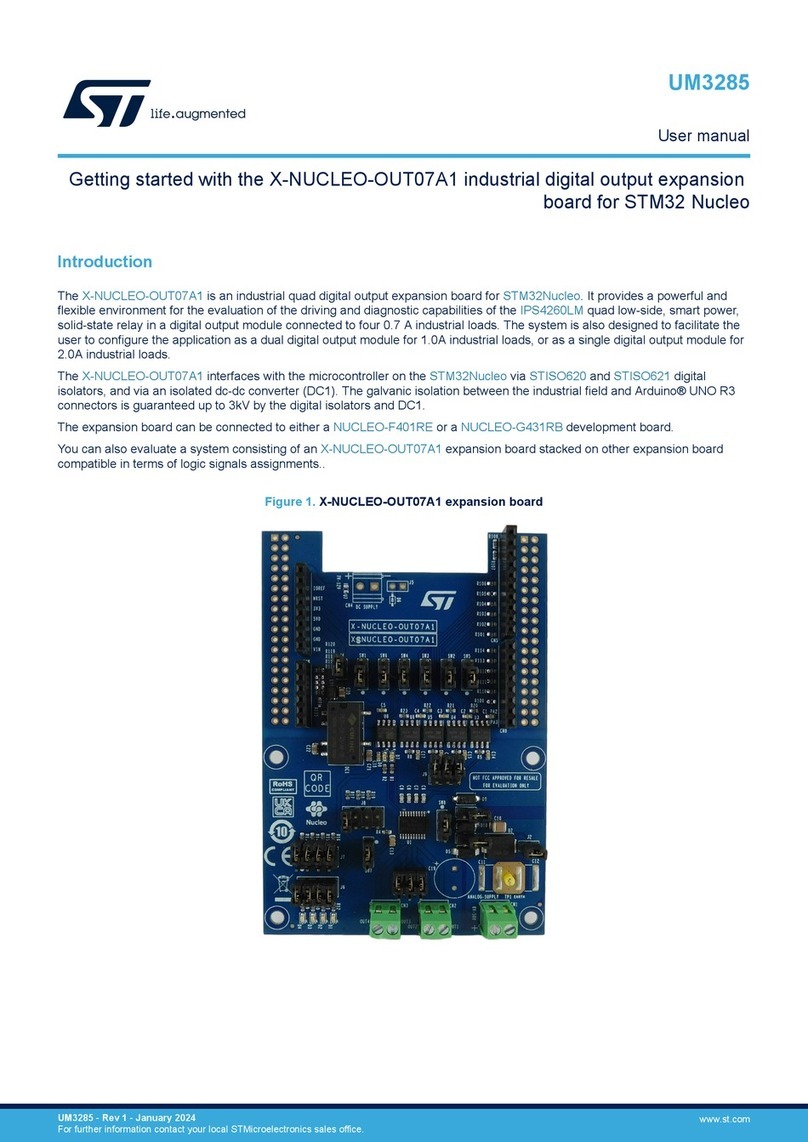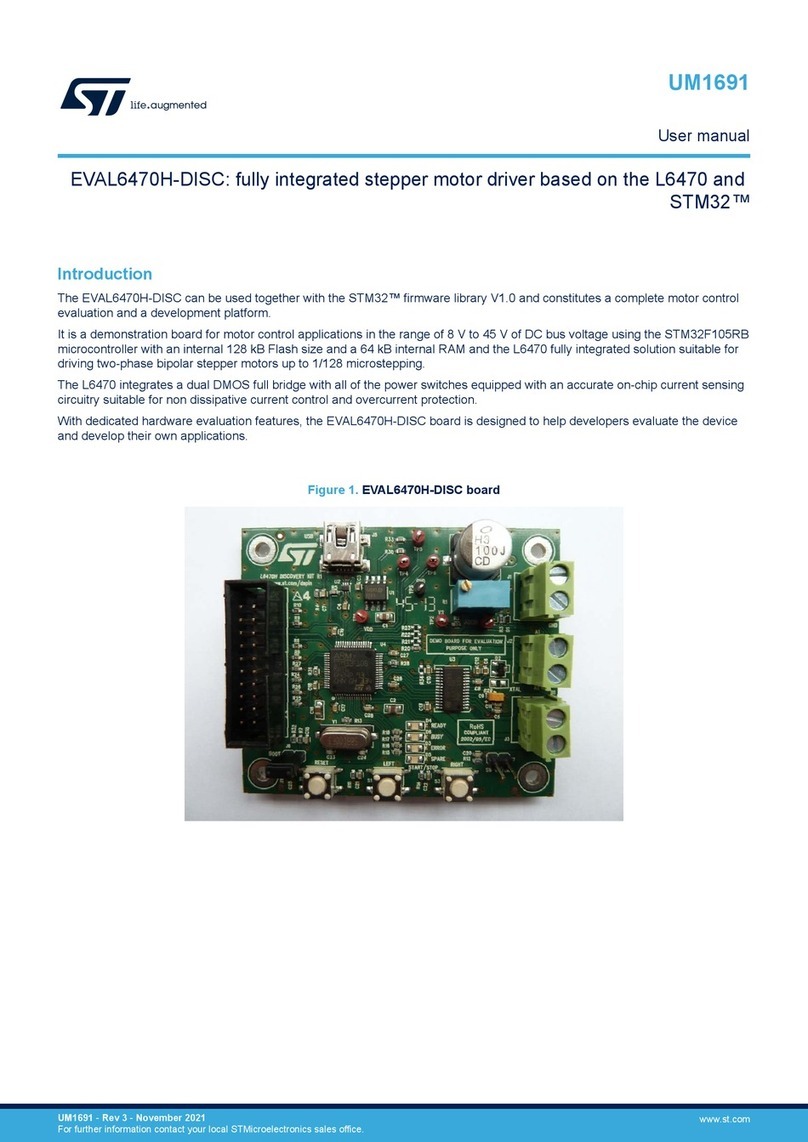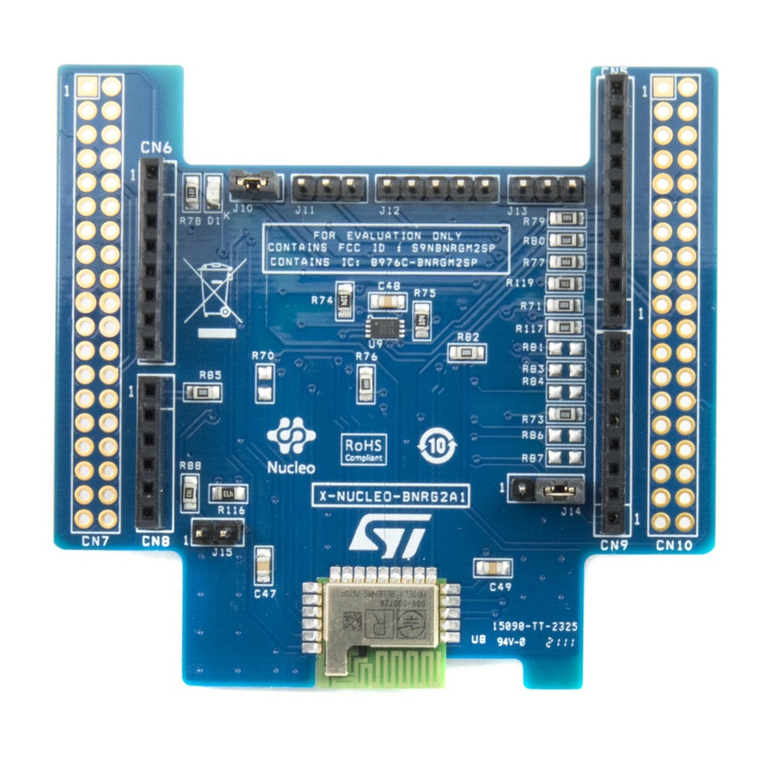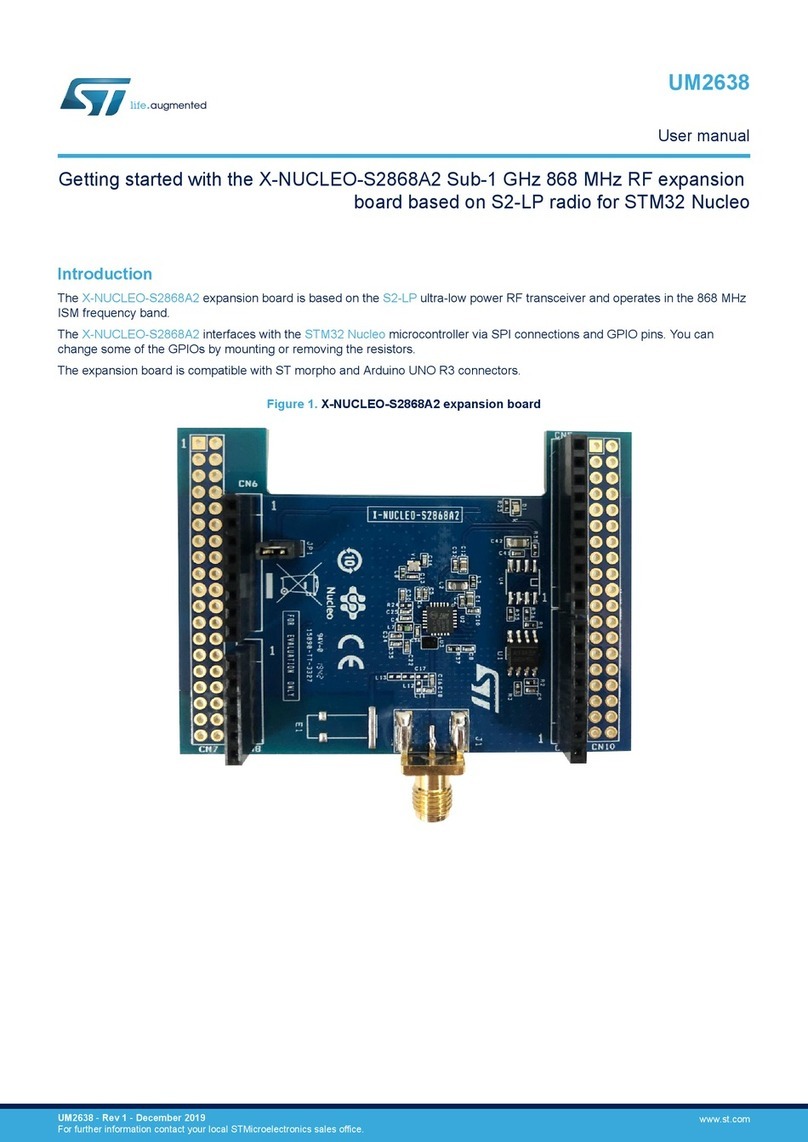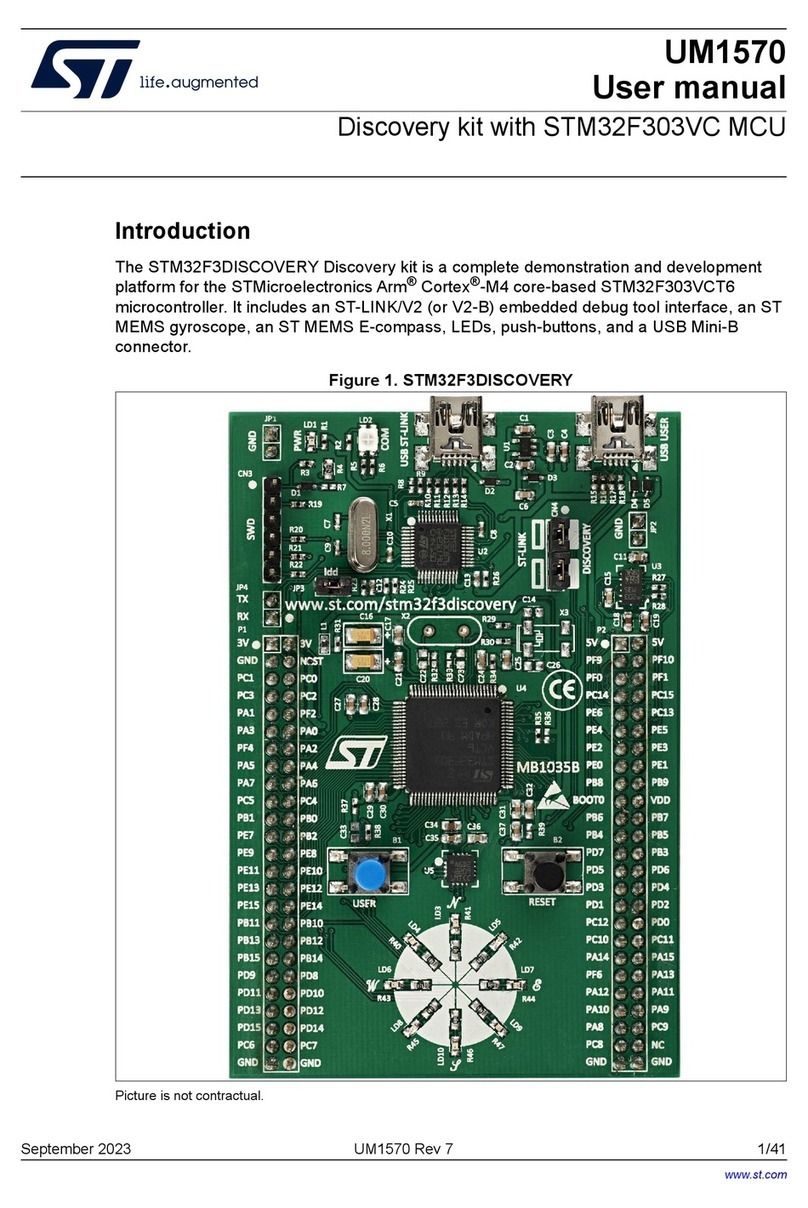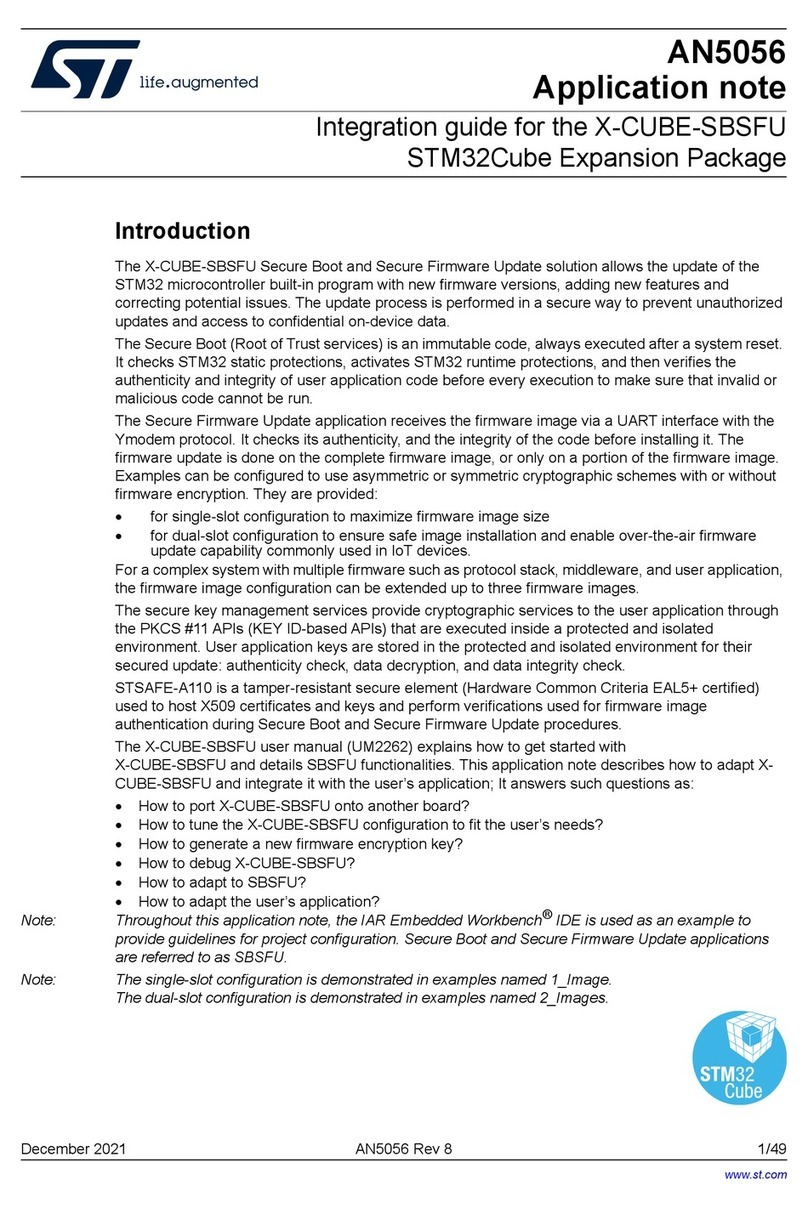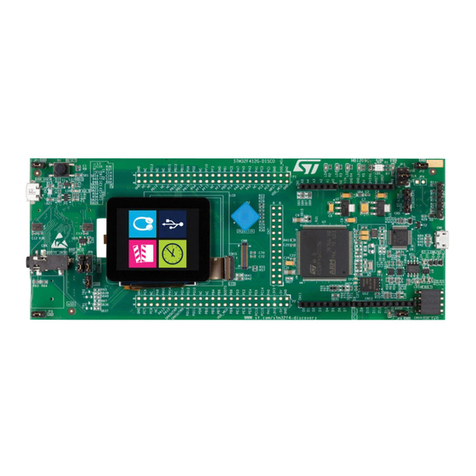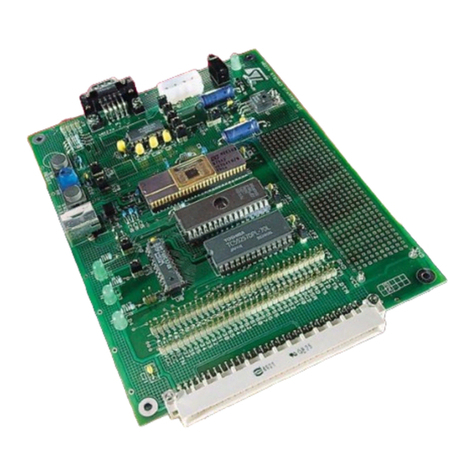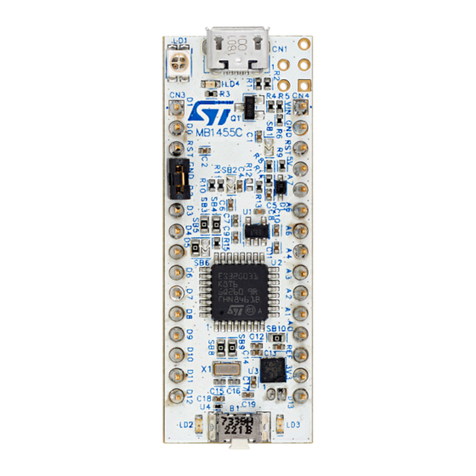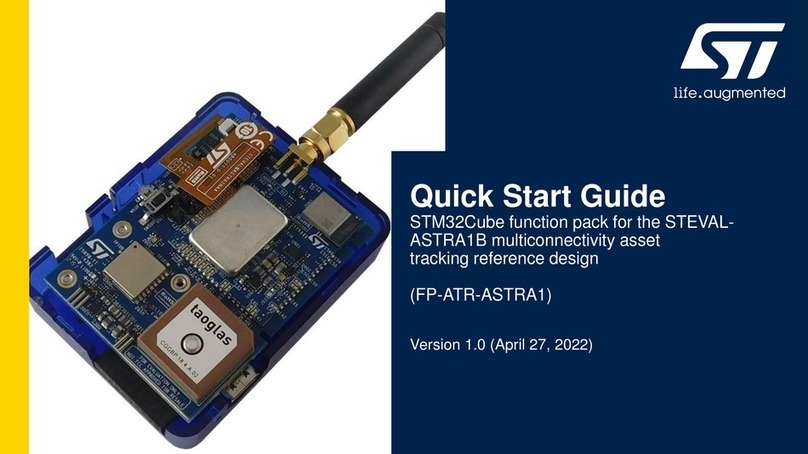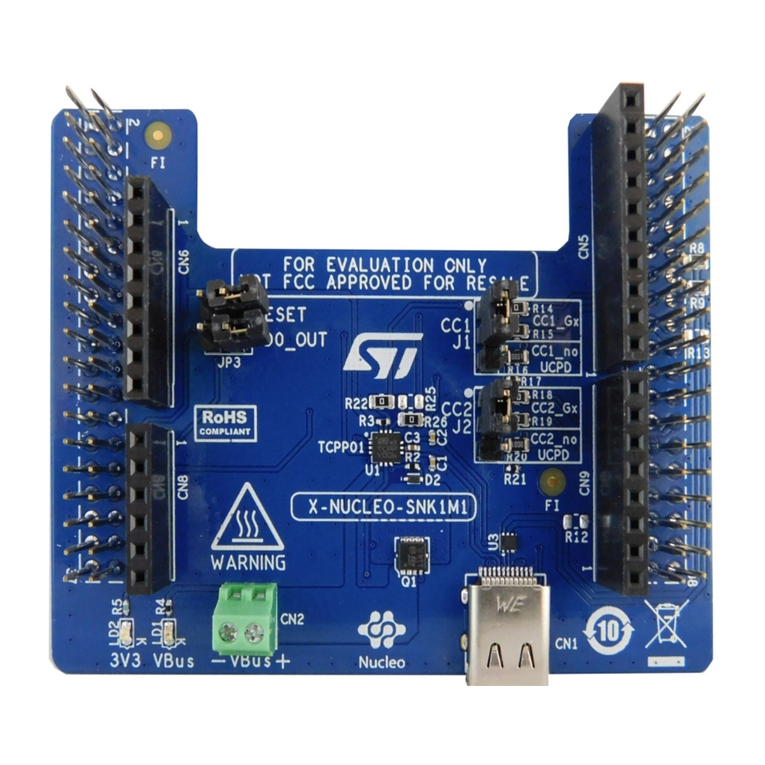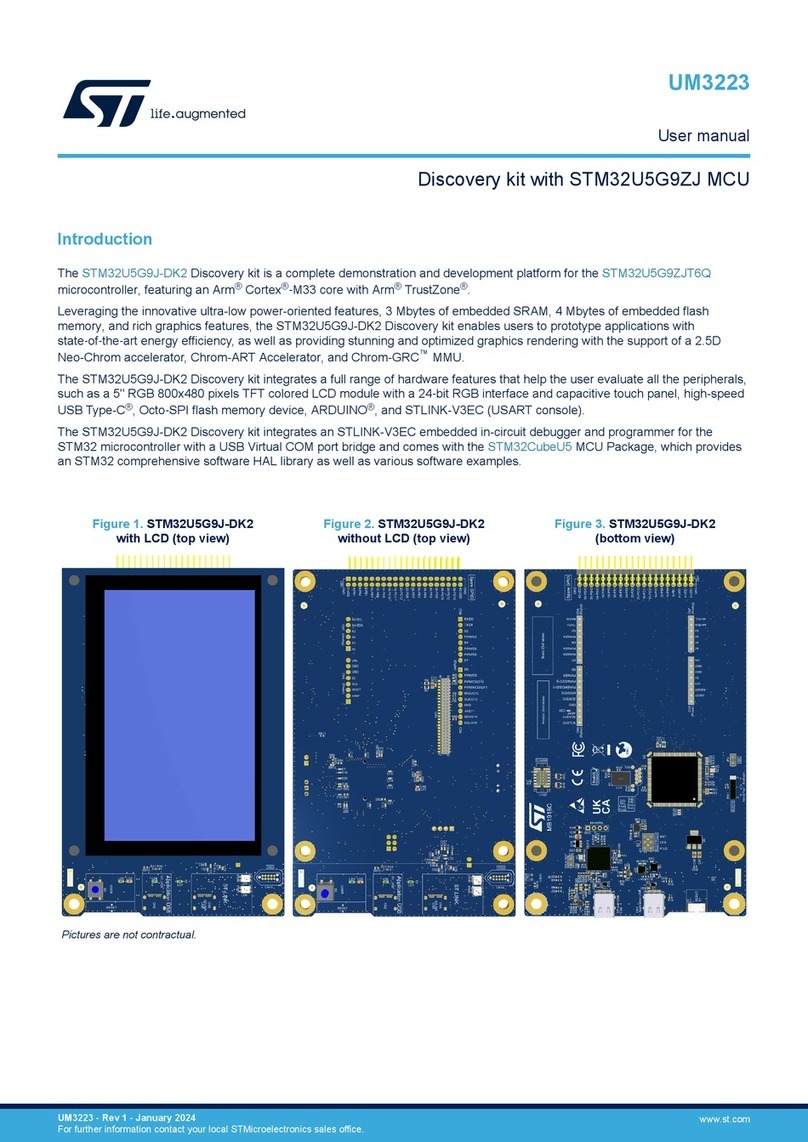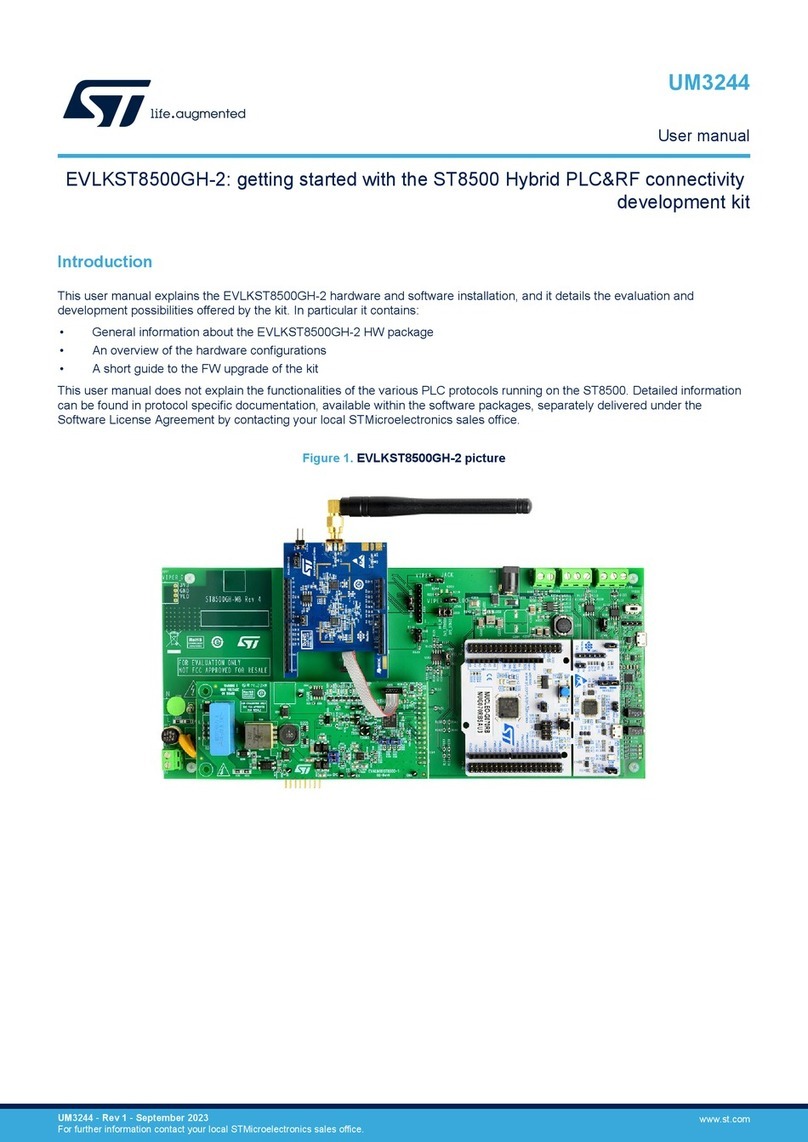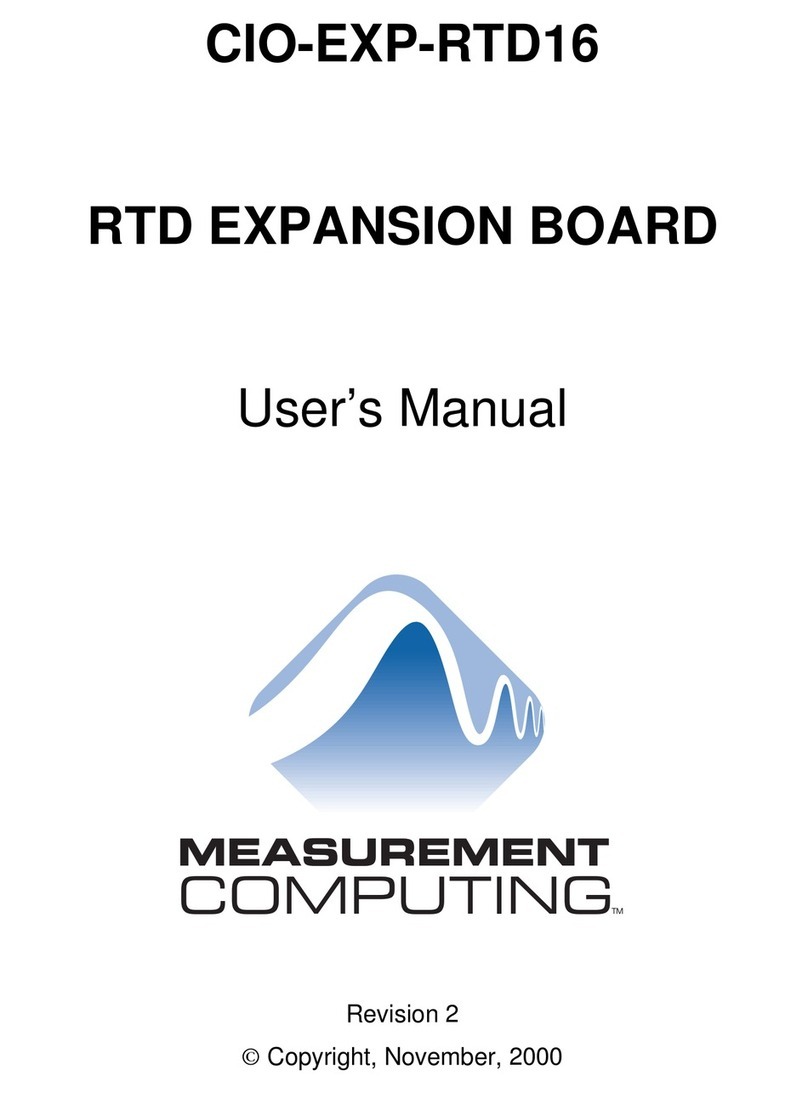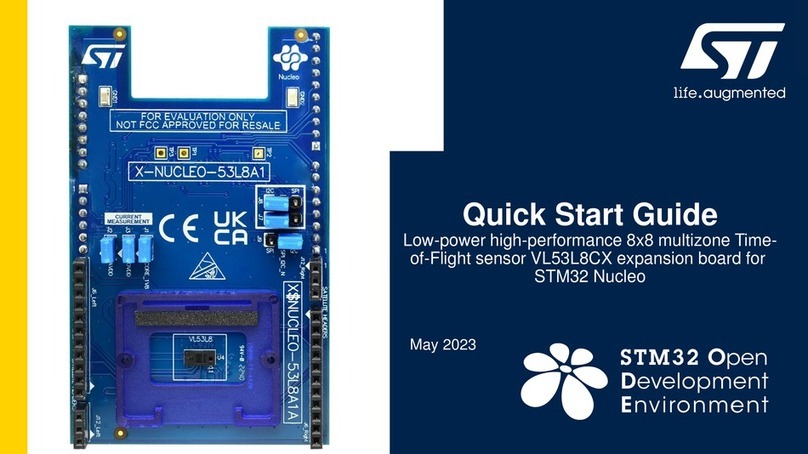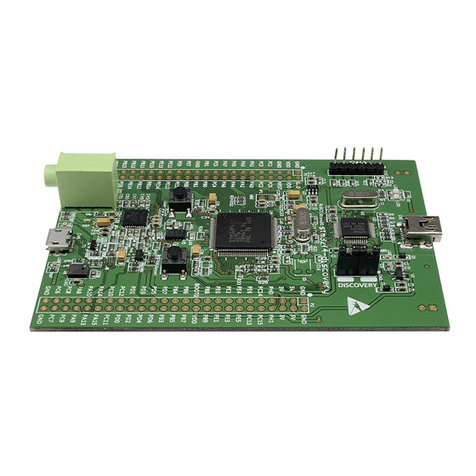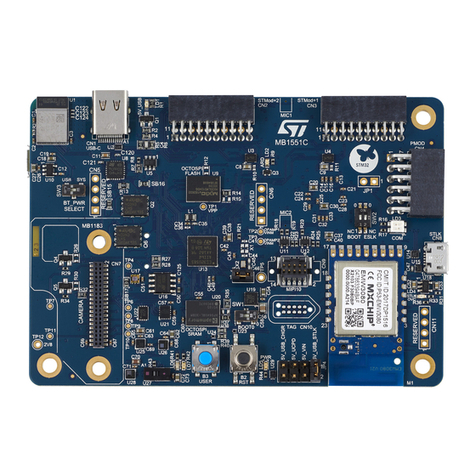
STM32CubeF2 architecture overview UM1739
8/22 DocID026120 Rev 4
APIs allowing to initialize and configure the peripheral, manage data transfer based on
polling, interrupt or DMA process, and handle communication errors that may raise
during communication. The HAL Drivers APIs are split into two categories:
– The generic APIs that provide common and generic functions to all the STM32
series,
– The extension APIs that provide specific and customized functions for a specific
family or a specific part number.
•Basic peripheral usage examples: this layer contains the examples of the basic
operation of the STM32F2 peripherals using either the HAL or/and the Low Layer
drivers APIs as well as the BSP resources.
•Low Layer (LL):
– The low layer APs provide low-level APIs at register level, with a better
optimization but less portability. They require a deep knowledge of MCU and
peripheral specifications. The LL drivers are designed to offer a fast lightweight
expert-oriented layer which is closer to the hardware than the HAL. Contrary to the
HAL, the LL APIs are not provided for peripherals where the optimized access is
not a key feature, or those requiring a heavy software configuration and/or a
complex upper-level stack (such as FMC, USB or SDMMC).
The LL drivers feature:
– A set of functions to initialize peripheral main features according to the parameters
specified in data structures
– A set of functions used to fill initialization data structures with the reset values
corresponding to each field
– A function for peripheral de-initialization (peripheral registers restored to their
default values)
– A set of inline functions for a direct and atomic register access
– A full independence from the HAL and the capability to be used in standalone
mode (without HAL drivers)
– A full coverage of the supported peripheral features.
Level 1: This level is divided into two sub-layers:
•Middleware components: set of Libraries covering USB Host and Device Libraries,
STemWin, FreeRTOS, FatFS, LwIP, and PolarSSL. The horizontal interactions
between the components of this layer are done directly by calling the feature APIs while
the vertical interaction with the low-level drivers is done through specific callbacks and
static macros implemented in the library system call interface. As an example, the
FatFs implements the disk I/O driver to access the microSD drive or the USB Mass
Storage Class.
•Examples based on the middleware components: each middleware component
comes with one or more examples (called also Applications) showing how to use the
component. Integration examples using several middleware components are provided
as well.
Level 2: This level is composed of a single layer which is a global real-time and graphical
demonstration based on the middleware service layer, the low-level abstraction layer and
the basic peripheral usage applications for board-based functions.
In the current version of the STM32CubeF2 firmware package, no Level 2 projects are
provided. The user can rely on the Level 2 projects provided with the STM32CubeF4
firmware package as example.
